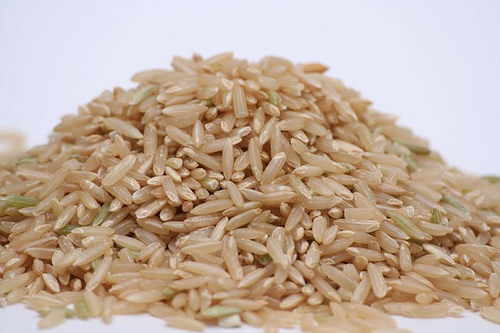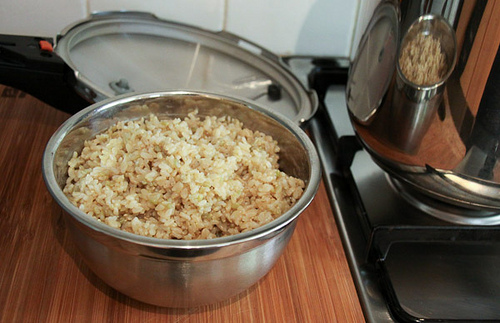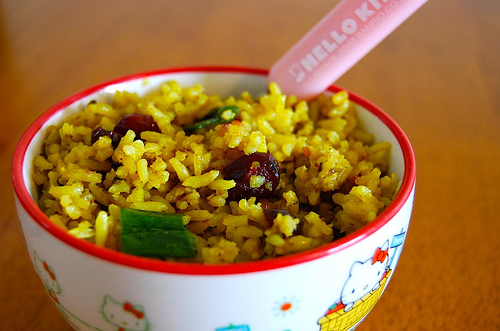
I like to use this "All About" column to demystify one of the strange foods we know we should be eating more of, but don't know how to handle. I have learned a lot about this stuff over the last few years, but these foods were impenetrable to me until I buckled down and started learning about them. Over the weekend I had a conversation with someone about brown rice which made me feel better about knowing so little about brown rice until recently. Clearly I was not alone on that!

Image courtesy Flickr/sean drellinger
What's the difference between brown and white rice?
All rice starts out as brown rice. The brown part is called "bran." It's basically the hull, and it is filled with nutrients. It is also kind of a tough coating, though. Sometimes the manufacturers will polish off the brown stuff and presto: there's your white rice.
Because white rice doesn't have that dark outer coating, it is less nutritious. But it is also more tender, and it tastes sweeter without that added coating of fiber. White rice is also stickier, because the hull helps prevent the grains from sticking. Nutritionally speaking, white rice is basically the equivalent of store brand white bread: empty calories.

Image courtesy Flickr/Belinda (miscdebris)
Why is brown rice better for you?
It took a lot to convince me to try brown rice, because let's face it, white rice is delicious. But brown rice certainly has its charms, and it has a much better place in your diet.
Brown rice is, as I mentioned, much more nutritious than white rice. In fact, brown rice is a whole grain, with all the nutrition and fiber that implies. A cup of brown rice is high in a lot of minerals that can be hard to get elsewhere, like magnesium.
Brown rice also has a lower glycemic index than white rice. This means that it takes longer to spike your blood sugar, and it spikes it much less than white rice. However, brown rice is still a carb, so people on low-carb diets will still want to avoid it.
And finally, brown rice is really cheap. A 5lb bag will last quite a while, and costs only a few dollars. I would be hard-pressed to name a food that has a better ratio of nutrition, filling-ness, and cost!

Image courtesy Flickr/HatM
Cooking brown rice
The best way to cook brown rice is in a rice cooker. (Seriously. They are magic.) After the cooker has finished, let the rice stand for an extra 10-15 minutes to help it soften up even more. I have never mastered the art of cooking it on the stovetop, but here is a very well-researched and expert article on the topic.
The secret to making brown rice palatable is, in a word, butter. And lots of it. Chicken broth helps, too. I also tend to put in an extra dollop of water, to make it even softer.
On the up side, brown rice keeps quite well in the refrigerator. You can make a big batch at the beginning of the week, store it in a lidded container, and scoop out what you need over the course of the week. You might want to add a little splash of water before you reheat it, if it seems a little on the crunchy side.

Image courtesy Flickr/nemuneku.jc
Using brown rice
Brown rice is very well suited to serving as the base for a veggie bowl. Drop some steamed or stir fried veggies atop a serving of brown rice, add the sauce of your choice, and you've got yourself a quick and easy dinner. (They sell these microwavable steam-in-the-bag sacks of frozen vegetables now. So convenient!)
These veggie bowls are easy to make ahead of time and freeze for later use, by the way. This is a great way for people with long working hours, kids, and/or college to eat cheap AND healthy.
For the most part, brown rice can be substituted for white rice in just about any recipe. There are a few things where the stickiness of white rice is important, and you will want to account for the difference. For example, if you are making croquettes (a.k.a. fish cakes) you would want to add an extra egg to help it hang together. And making sushi with brown rice must surely be an exercise in patience. But it is worth the extra trouble!
Main image courtesy Flickr/Rob Qld

1 comments